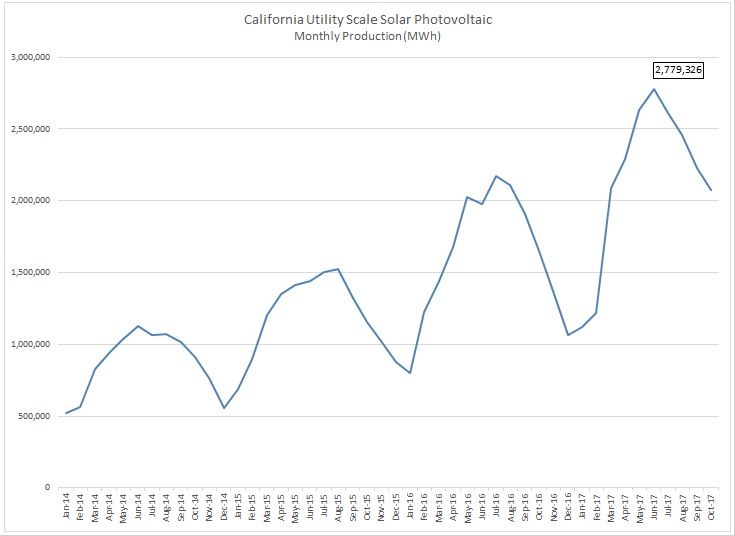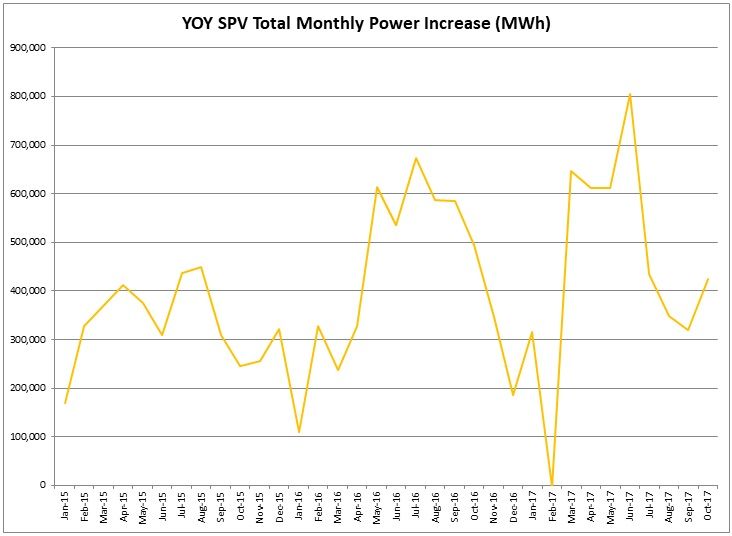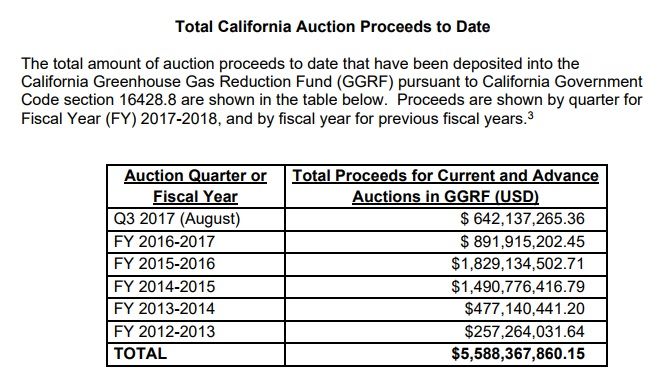I haven't posted my SPV graph since the June high, and June did turn out to be the high month for the year. It's all downhill from there:
The YOY percentage gains in total SPV power for the last several months look like this:
June: 40%
July: 20%
August: 16%
September: 16%
October: 25%
The YOY percentage gain in total power really doesn't tell the whole story. What really matters is the YOY increase in the amount of SPV generated. Because as the total gets larger, any additional power generated becomes a declining percentage of the total (see Mrs. Sark, I did pay attention in my Calculus 414 class

). So here is a graph showing the YOY total increase in SPV power generated:
This guy bounces around for a variety of reasons: Additional installed capacity, weather (see February), incentives. But when you ignore the outliers, the trend looks like yearly installed capacity over time is slowly increasing. Even a level line would show additional capacity being added every year.
To put some perspective on what the numbers mean, I looked up the average power consumption for homes in California. This page shows the average monthly electricity consumption of homes in all 50 states:
How Much Electricity Do Homes in Your State Use?
California shows 557kWh average per month, or 6,684 kWh per year. From my chart above, October YOY increase was 425,563 MWh, or 425,563,000 kWh. If my interpretation is correct then the following seems to summarize this:
In the last 12 months, California added additional SPV generation to enable the powering of 63,668 homes.
So California has 13 million households. The 63,668 is 0.49% of all households. The SPV added in the last 12 months will be able to power 1 in every 200 homes in the state, for the foreseeable future.
The interpretation of that depends on whether you are a glass half full or glass half empty kind of person...

RT





